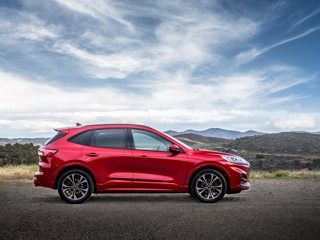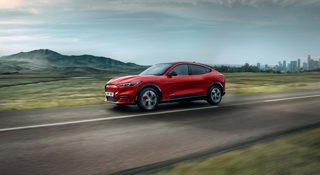Ford Kuga plug-in hybrid (PHEV) drivers across Europe have covered 49% of their total distance travelled, this year, using battery power alone.
Anonymised real-world data from Ford suggests that Kuga PHEV drivers are utilising the car’s electric driving capability to a significant degree.
More than two-thirds of journeys completed in a Kuga PHEV are shorter, local trips of 35 miles or less that could be completed using just externally-charged battery power.
Roelant de Waard, general manager, Passenger Vehicles, Ford of Europe, said: “We firmly believe that our customers buy hybrid vehicles to benefit from the advantages of driving on electric power, and this data shows that Kuga Plug-In Hybrid customers are keen to use their cars in EV mode as much as possible.”
From more than 633,000 drive days this year, the vehicle made possible more than 420,000 drive days with zero tailpipe emissions. The average daily driving distance was 32 miles, which is less than the vehicle’s 35-mile WLTP pure-electric driving range.
Ford also found that 45% of charging events took place overnight.
Read our Ford Kuga review here.
The Kuga PHEV was the best-selling plug-in hybrid car in Europe during the first half of 2021. There were 3,628 registrations in the UK this year to June, alone.
Across Europe, the Kuga PHEV now outsells all other models in the Kuga range put together.
Early examples of the car were affected by a battery fault that posed a fire risk and were recalled.
Maximising the amount of time spent driving on externally-charged battery power can provide cost savings of more than £700 per year for the average driver.
Earlier this year, Ford announced that 100% of its passenger vehicle range in Europe will be zero-emissions capable, all-electric or PHEV by mid-2026; moving to all-electric by 2030.





















Login to comment
Comments
No comments have been made yet.